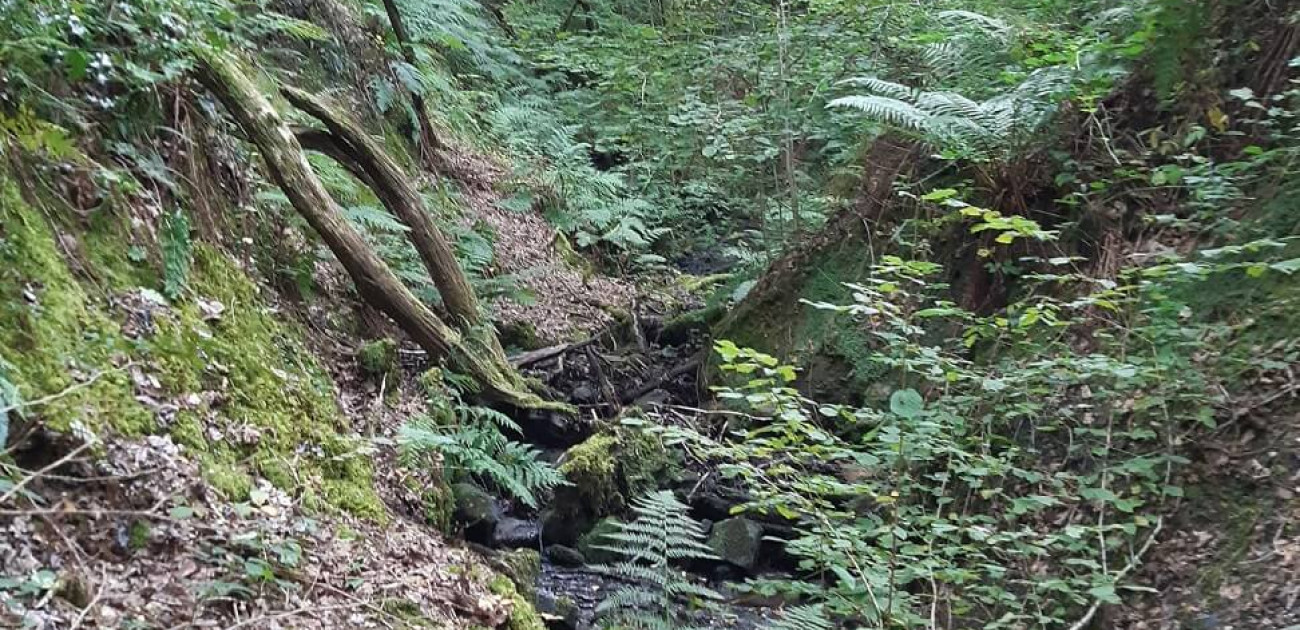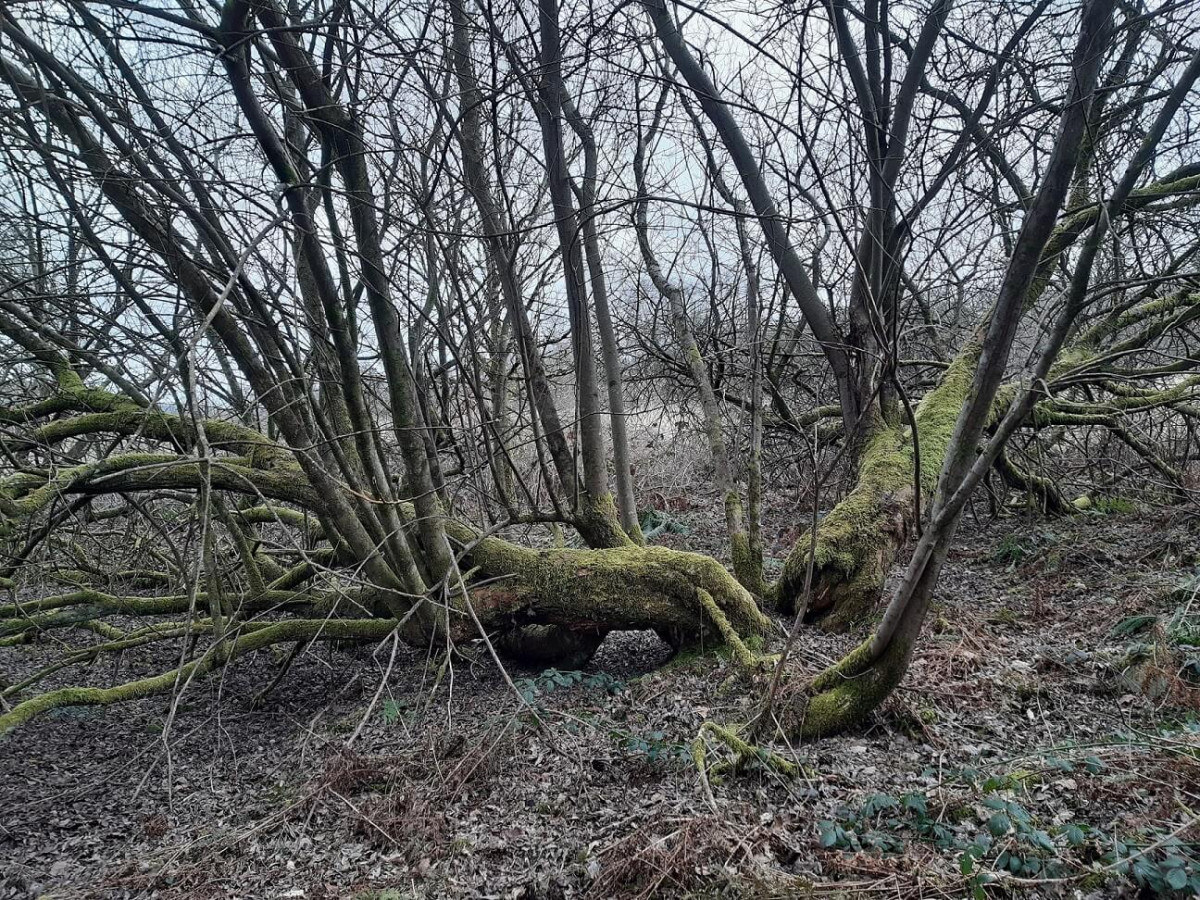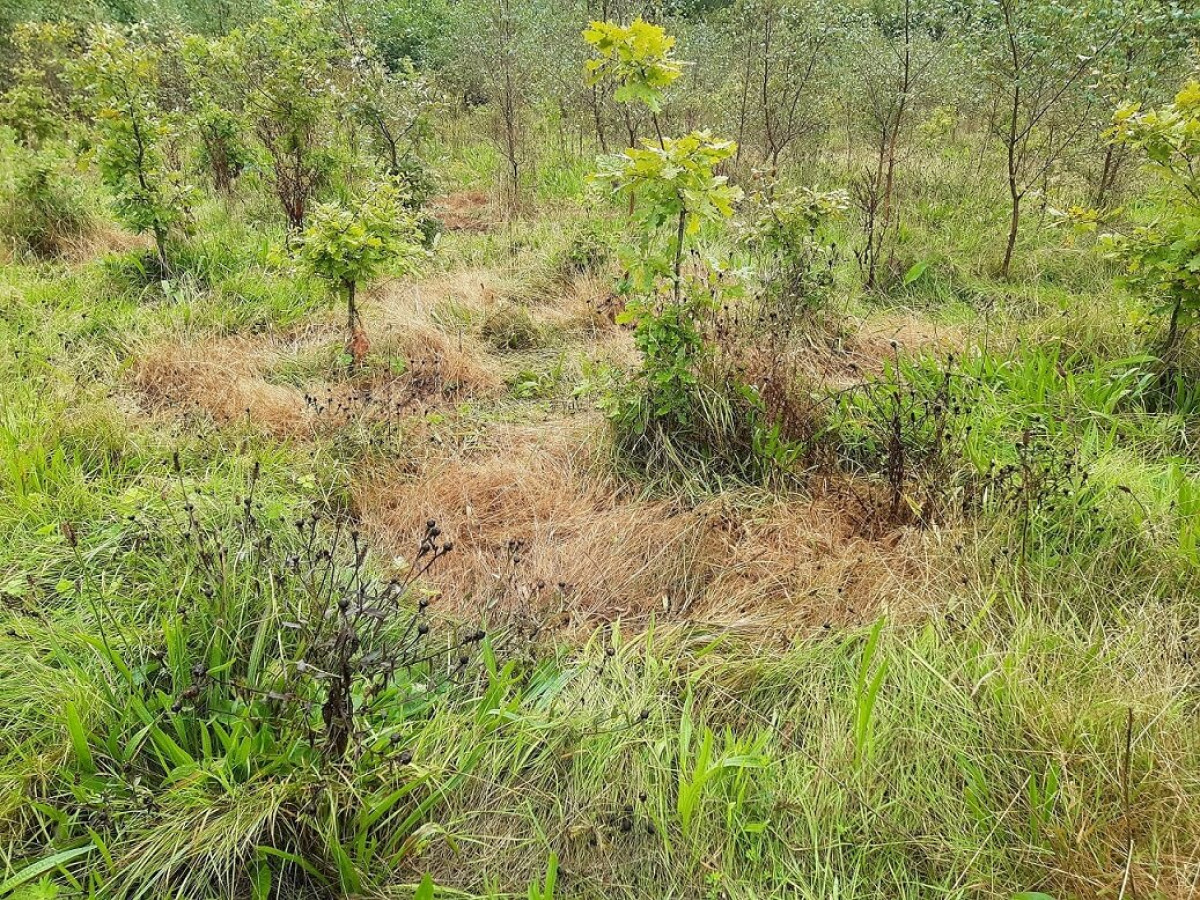24 March 2023
Coed Olaf - History of the Woodland
Coed Olaf is a newly planted wood with parcels of new and old woodland. Here, we discuss the baseline of how much was covered with trees in the past and if there is any evidence of previous woodland within the landscape.

There has not been much wood in Coed Olaf for a long time, except the valley to the northeast which was still woodland in the early 19th century. Overall, it is a moot point as to how wooded it was in the past. There is no current evidence of ancient forest (pre-1500) but many of the trees and patches of trees are clearly very old, for example the inaccessible areas on the steep banks near the waterfall are unlikely to have been managed at any time.
The Romans and the Normans considered Wales heavily wooded, but this may have been more of a military view than an ecological one. Excavations on Mynydd y Betws suggest the valley was quite wooded in the 5th and 6th centuries, with local trees being alder, birch, blackthorn, hazel, and oak. In the early mediaeval period, the woodland was in Glynamman Forest, but this was more likely a wasteland of moor and trees for hunting and subject to Forest Law, rather than the modern idea of a forest.
Although some of the land was moor with a thin scattering of trees, the farmland was mostly made by cutting down denser woodland. Indeed, there is evidence from maps of the woods in the valley being assarted during the 19th century, and some of the field names suggest a woodland origin: Cae Coed[1], Cae Carkit (Cae Carw Coed) and (perhaps) Cae Newydd, which translate as Woodland Field, Deerwood Field, and New Field. If these fields are regarded as former woodland, the proportion of wood was at least one-quarter of the land within a wet moorland landscape.
The trees in the railway cut to the north of Waunygarnant are older. It is a mix of sessile oaks, ash, hazel, willow and holly. These trees may have been felled for pit props then left to grow out after mining ended here in the early twentieth century. They are now 70 - 100 years old. In the wood in the south of the land, the fields were formerly wood pasture or arable but were left to develop about 40 - 40 years ago.

There are a grove and lots of hedges. There is a grove of pendunculate oaks on the knoll in Waungroes that, because sessile oak is the natural oak here, may have been planted rather than self-sown.[2] There are three types of hedges here: trees remaining after woods were assarted; banks alongside the ditches where trees have naturally grown on top; trees that have self-seeded along the edges of ditches that have no banks.[3]

The trees alongside drainage ditches are younger as they have grown beside the newer drains. Most of the hedges are earth banks with trees on top. The banks are of varying heights and widths, and some are cased with stone, called a clawdd.[4] Some have a single ditch while others have two ditches. Most hedges were coppiced but have now been allowed to grow into full-sized trees. Along Bryncethin Road, they may have been laid as a hedge; this is now flailed by a tractor hedge cutter every year, but if it was a traditional double Carmarthenshire hedge would have been laid every 5 – 7 years.
The fields have been planted with new trees for carbon capture under the Glastir Scheme. This is a modern function for woodland that aims to tackle climate change by using the natural processes of trees to fix atmospheric carbon into cellulose and lignin in their tissues. At the same time, the wood may address biodiversity loss, but this is a more complex thing. Generally, though, our wood is valued more for ecological services than their their timber.

Notes:
[1] Ty-mawr’s field names, just south of the wood, include Coed Cae Isaf, Coed Cae Mawr, Coed Cae Bach, Coed Cae Mawr Isaf, and Wood. These names suggest another 17 acres of ‘woodland grazing’ to the south, giving a possible wood of over 20 acres. The field called Wood is now listed as Ancient Woodland.
[2] John Phillips recalls in his memoirs that “We would walk past Ty Isha, take a look at the pig, and then go up to a clump of trees we would call for some reason 'The Woods' where we could dig for a type of groundnut.” I think this refers to this grove of pendunculate oaks. Reference: A Journey through the Waun of my Childhood by John Phillips (rootsweb.com).
[3] Earlier ditches are deeper, usually double with a bank in the middle, which is often faced with stone (a clawdd), but later ditches are shallow, single ditches without banks.
[4] A clawdd (plural: cloddiau) is a traditional earthen bank, faced with stone to protect it from wear and tear from stock and erosion and collected from stones in nearby fields. This differs from a drystone wall with earth within it.




